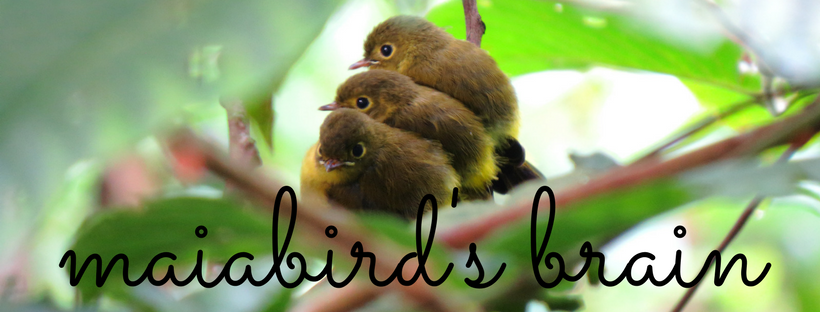I had a couple of other goals for my solo birding morning: first was to bird with only my bins and no camera and second was to find the Ashy Drongo which was spotted in the campus last month.
 |
| The trees lining the UP Oval are almost completely bare |
I haven't gone birding without my Canon SX50 ever since Jops gave it to me two years ago. I wanted to go back to just pure birding, even for a few hours and this was the perfect time to do that. Armed with only my bins and notebook, I set off from the AS parking lot and headed to the library.
Colasisis and Philippine Pygmy Woodpeckers were calling from nearby and Yellow-vented Bulbuls were feeding on a tall, flowering African Tulip. I was spotting a Coppersmith Barbet on a tall tree when a grey bird flew past with a characteristic undulating flight. Could it be the Drongo??? After a bit of searching, I spotted the all-grey bird swallowing its prey. I spent some time observing it and taking note of its field marks: whitish face, splayed fish tail, and sharp bill. Found it! The Ashy Drongo I saw is the luecogenys ssp. which is a migrant.
 |
| Somewhere up that tree, there is an Ashy Drongo, Coppersmith Barbet, and Yellow-vented Bulbul |
I lingered a bit in the area, wishing for the unicorn (aka male Narcissus Flycatcher) to make an appearance. I soon left, the unicorn still being a unicorn.
I walked through the Beta Way but didn't see much birds except for a few Brown Shrikes and an Arctic/Kamchatka/Japanese Leaf Warbler.
 |
| I used to see so many birds here including Grey-streaked Flycatchers and even an Oriental/Himalayan Cuckoo... |
Next stop was the path leading to the U Lagoon and heard some Collared Kingfishers and Black-naped Orioles calling from the trees. I inspected the leftmost pond and found it to be slowly drying up. Instead of the usual Common Kingfisher, I saw a Grey Wagtail instead and also a couple of White-breasted Waterhens.
 |
| The usually muddy portions are now cracked earth |
Along the path, I got great views of Colasisis and Philippine Pygmy Woodpeckers. As I approached the end of the trail, I was happy to see the Common Kingfisher. It transferred to an area that still had a considerable amount of water.
 |
| A wetter, more watery part of the lagoon |
I exited at the UP Oval fronting the Vargas Musuem and I saw a lot of Golden-bellied Gerygones and Lowland White-eyes flitting among the trees. There were also a lot of Pied Trillers that morning. I walked to the Faculty Center and looked for the Philippine Nightjar but it wasn't in its usual roosting tree.
I checked my watch and it was already 10AM. I decided to walk back to the parking and drive home. I remember the times I spent a lot of time birding in UP years before and it still is a great site for a quick birding fix. I have yet to see that unicorn of a bird but I am very happy with my bird list for my solo Valentine backyard birding morning sans my camera =)
For those going birding anywhere from now until Monday (February 16), submit your bird lists on http://ebird.org to contribute to the Philippine Great Backyard Bird Count.




